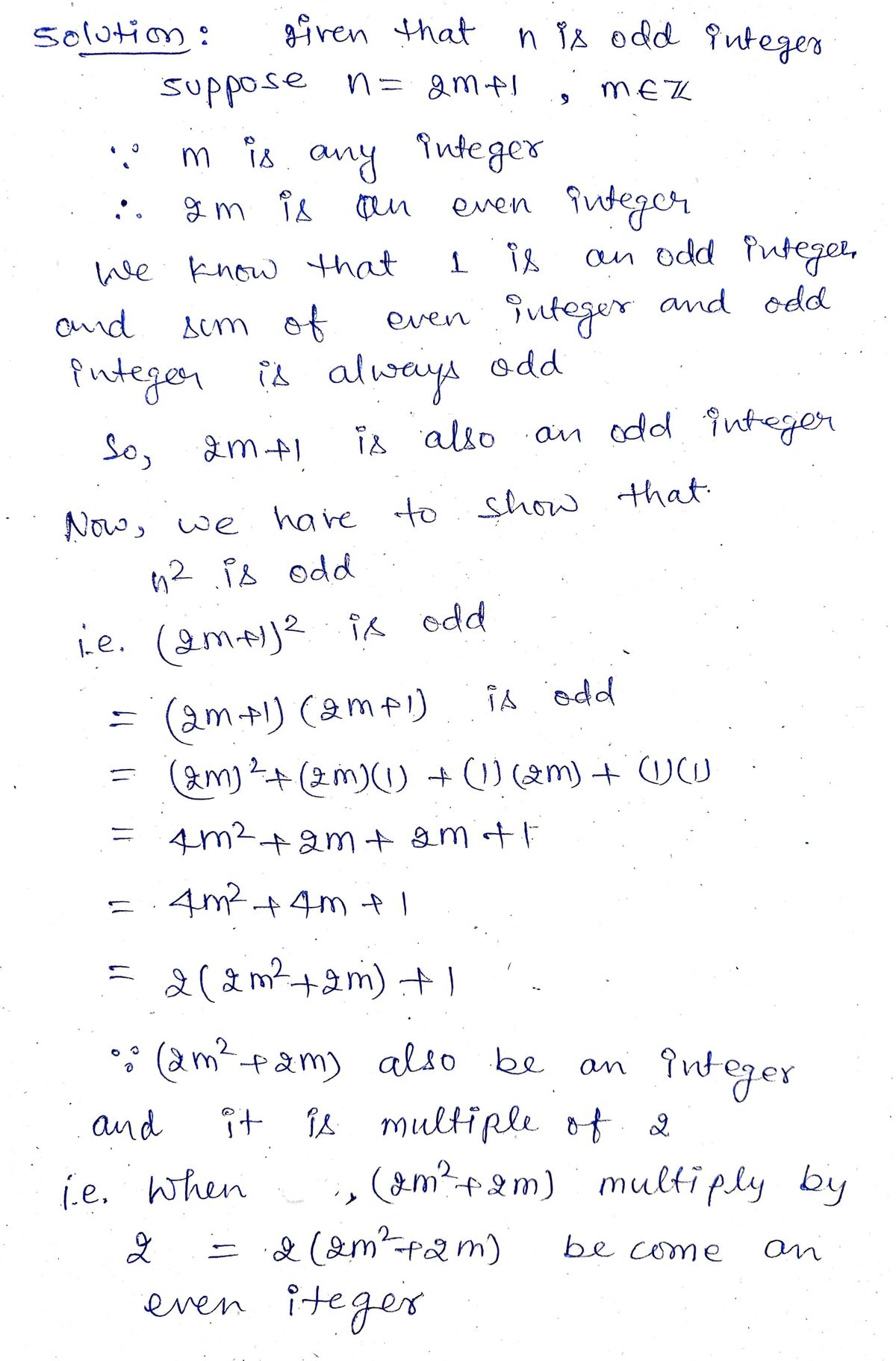Assumptions • In this text we assume a familiarity with the laws of basic algebra, which are listed in Appendix A. • We also use the three properties of equality: For all objects A, B, and C, (1) A = A, (2) if A = B then B = A, and (3) if A = B and B = C, then A = C. • In addition, we assume that there is no integer between 0 and 1 and that the set of all integers is closed under addition, subtraction, and multiplication. This means that sums, differences, and products of integers are integers. • Of course, most quotients of integers are not integers. For example, 3 ÷ 2, which equals 3/2, is not an integer, and 3÷0 is not even a number. Problem: 28. For all integers n, if n is odd then n² is odd.
Assumptions • In this text we assume a familiarity with the laws of basic algebra, which are listed in Appendix A. • We also use the three properties of equality: For all objects A, B, and C, (1) A = A, (2) if A = B then B = A, and (3) if A = B and B = C, then A = C. • In addition, we assume that there is no integer between 0 and 1 and that the set of all integers is closed under addition, subtraction, and multiplication. This means that sums, differences, and products of integers are integers. • Of course, most quotients of integers are not integers. For example, 3 ÷ 2, which equals 3/2, is not an integer, and 3÷0 is not even a number. Problem: 28. For all integers n, if n is odd then n² is odd.
Advanced Engineering Mathematics
10th Edition
ISBN:9780470458365
Author:Erwin Kreyszig
Publisher:Erwin Kreyszig
Chapter2: Second-order Linear Odes
Section: Chapter Questions
Problem 1RQ
Related questions
Question
Please solve and show all work.

Transcribed Image Text:Prove the statements. Use only the definitions of the terms and the Assumptions listed below, not any
previously established properties of odd and even integers. Follow the directions given in this section for
writing proofs of universal statements.
Assumptions
• In this text we assume a familiarity with the laws of basic algebra, which are listed
in Appendix A.
• We also use the three properties of equality: For all objects A, B, and C,
(1) A = A, (2) if A = B then B = A, and (3) if A = B and B = C, then A= C.
• In addition, we assume that there is no integer between 0 and 1 and that the set of
all integers is closed under addition, subtraction, and multiplication. This means
that sums,
differences, and products of integers are integers.
• Of course, most quotients of integers are not integers. For example, 3+2, which
equals 3/2, is not an integer, and 3 ÷0 is not even a number.
Problem:
28. For all integers n, if n is odd then n² is odd.
Expert Solution
Step 1: First part

Step by step
Solved in 3 steps with 2 images

Recommended textbooks for you

Advanced Engineering Mathematics
Advanced Math
ISBN:
9780470458365
Author:
Erwin Kreyszig
Publisher:
Wiley, John & Sons, Incorporated

Numerical Methods for Engineers
Advanced Math
ISBN:
9780073397924
Author:
Steven C. Chapra Dr., Raymond P. Canale
Publisher:
McGraw-Hill Education

Introductory Mathematics for Engineering Applicat…
Advanced Math
ISBN:
9781118141809
Author:
Nathan Klingbeil
Publisher:
WILEY

Advanced Engineering Mathematics
Advanced Math
ISBN:
9780470458365
Author:
Erwin Kreyszig
Publisher:
Wiley, John & Sons, Incorporated

Numerical Methods for Engineers
Advanced Math
ISBN:
9780073397924
Author:
Steven C. Chapra Dr., Raymond P. Canale
Publisher:
McGraw-Hill Education

Introductory Mathematics for Engineering Applicat…
Advanced Math
ISBN:
9781118141809
Author:
Nathan Klingbeil
Publisher:
WILEY

Mathematics For Machine Technology
Advanced Math
ISBN:
9781337798310
Author:
Peterson, John.
Publisher:
Cengage Learning,

